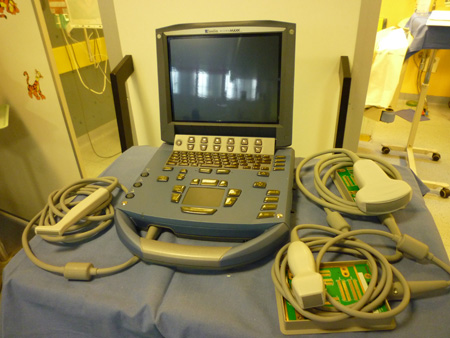Research Study on Ultrasound Guided Central Venous Catheter Insertion in Children Aged Between 0-4 at the Policlinico Umberto I
Project location: Italy, Rome
Project start date: September 2008 -
Project end date: August 2009
Project number: 2008-06
Beneficiary: Policlinico Umberto I di Roma Clinica Pediatrica

Ultrasound scanner
The Unit has recently published several international papers on this subject.
The cannulation of central veins is a common practice in medicine either for diagnostic or therapeutic purposes. The most adopted cannulation technique refers to a blind access with anatomical landmarks. Central and peripheral catheter insertion is frequently blind, however it may turn out to be very difficult especially in young children whose vessels may be hardly identified. An ultrasound guided approach involves several advantages as compared to traditional techniques:
- Successful intravascular catheter insertion in nearly all patients with reduced procedure time and material consumption;
- Reduction in mechanical complications related to catheter insertion (arterial puncture, hematoma, pneumothorax, hemothorax);
- Prompt bedside identification of the most worrisome complications (arterial hemorrhage, pneumothorax, hemothorax) and support of their specific treatment;
- Immediate check of the catheter position in the vascular system through echo-contrast integrated and intracavitary ECG.
The aim of this study co-funded by the Nando Peretti Foundation is to evaluate the advantages of ultrasound for central venous/arterial catheter insertion in young children (0-4 years).




